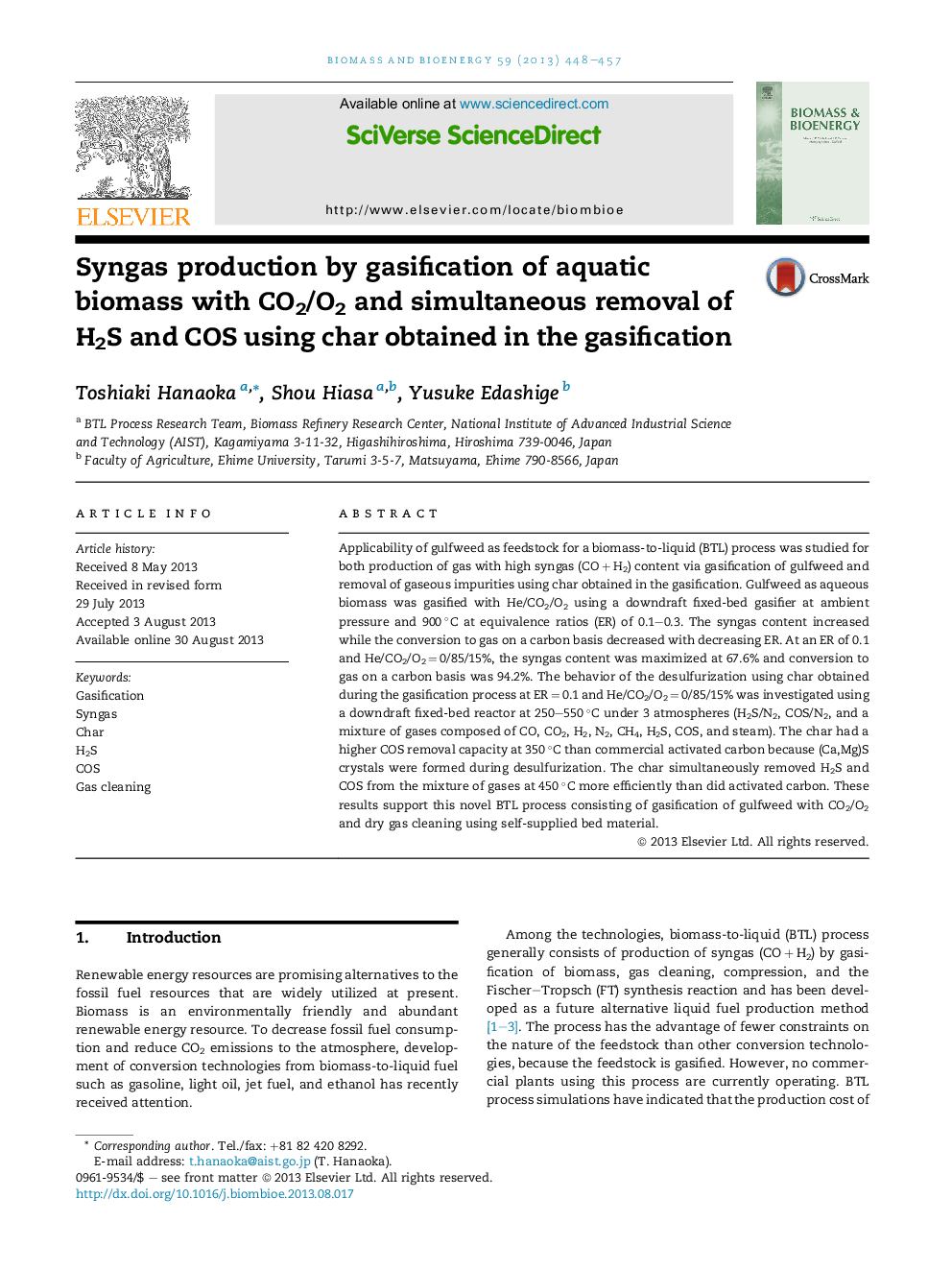| Article ID | Journal | Published Year | Pages | File Type |
|---|---|---|---|---|
| 677045 | Biomass and Bioenergy | 2013 | 10 Pages |
•A product gas with high syngas content was produced from the gasification of gulfweed with CO2/O2.•The syngas content increased with decreasing the equivalence ratio.•The syngas content was maximized at 67.6% at an ER of 0.1 and He/CO2/O2 = 0/85/15%.•The char simultaneously removed H2S and COS from a mixture of gases at 450 °C efficiently.
Applicability of gulfweed as feedstock for a biomass-to-liquid (BTL) process was studied for both production of gas with high syngas (CO + H2) content via gasification of gulfweed and removal of gaseous impurities using char obtained in the gasification. Gulfweed as aqueous biomass was gasified with He/CO2/O2 using a downdraft fixed-bed gasifier at ambient pressure and 900 °C at equivalence ratios (ER) of 0.1–0.3. The syngas content increased while the conversion to gas on a carbon basis decreased with decreasing ER. At an ER of 0.1 and He/CO2/O2 = 0/85/15%, the syngas content was maximized at 67.6% and conversion to gas on a carbon basis was 94.2%. The behavior of the desulfurization using char obtained during the gasification process at ER = 0.1 and He/CO2/O2 = 0/85/15% was investigated using a downdraft fixed-bed reactor at 250–550 °C under 3 atmospheres (H2S/N2, COS/N2, and a mixture of gases composed of CO, CO2, H2, N2, CH4, H2S, COS, and steam). The char had a higher COS removal capacity at 350 °C than commercial activated carbon because (Ca,Mg)S crystals were formed during desulfurization. The char simultaneously removed H2S and COS from the mixture of gases at 450 °C more efficiently than did activated carbon. These results support this novel BTL process consisting of gasification of gulfweed with CO2/O2 and dry gas cleaning using self-supplied bed material.
